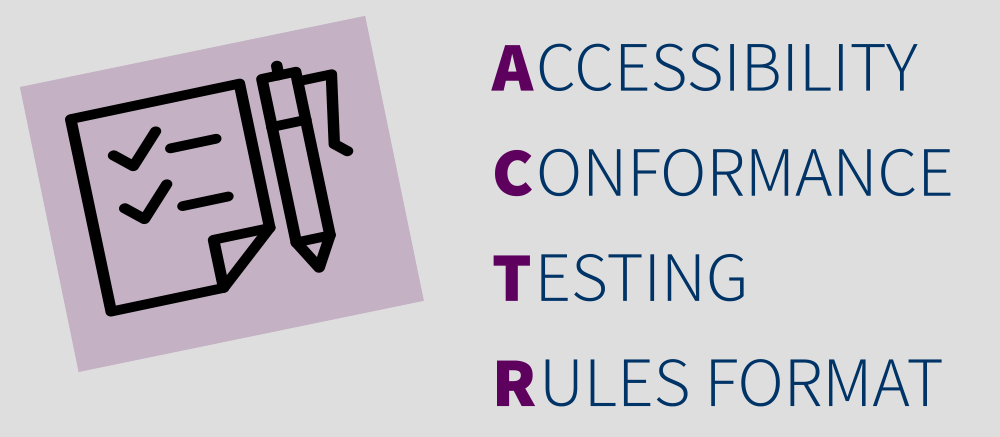Many of us spend a lot of their time and brain work for accessibility testing. The interpretation of the Guidelines WCAG with dozens of possible techniques is very subjective and it leads to discussions and to an individual interpretation. We must live with that and not all of us have a positive attitude to deal with this kind of 'soft' requirements.
Let me add some examples: When is an image purely decorative and has then no alternative text? Or, what makes a link text self-explanatory? Or, what is a valid exception for a link to open in a new window? If you ask five experts, you'll get different answers.
Because the interpretation of the WCAG is so subjective and leads to inconsistency in the validation from organization to organization and at the other hand accessibility is becoming a legal requirement all around the world, the need for a reliable test method has become evident.
W3C Harmonization of Accessibility Testing
The ACT Rules Community Group, is set up to harmonize the interpretation of W3C accessibility standards, such as WCAG and WAI-ARIA, for testing purposes. The ACT Rules Format has on the 30th of July 2019 been proposed to go into the last phase before becoming a W3C standard. It is really about making sure that results are consistent. About having a procedure that you follow to ensure consistency across different tests and across different organizations. It will act as a baseline for automated testing tools and manual testing methodologies that interpret WCAG for particular technologies. By aligning tools and test methodologies with this baseline, the consistency and quality will be improved.
Who is driving the standardization?
Chair of the ACT Rules community group is Wilco Fiers of Deque Research. He is based in The Netherlands and his role is funded in the EU WAI-Tools project. Main contributors are from SiteImprove Denmark, followed by contributors from public organizations from France, Norway and Portugal and a few contributors from private companies such as IBM and The Paciello Group and others more. The goal of the group is to achieve the harmonization by defining test rules using the ACT Rules Format and to review these in the community with a wide variety of tools.
Anyone can suggest new rules on the group's Github repository, so you don't even have to be a member of the Community Group to contribute in this way.
What ACT means for us?
SiteImprove and axe accessibility auditing will be the first that apply the ACT Rules format in their test- and monitoring tools, followed by TPG with their ARC tool.
As the ACT-Rules format is open and available on Github, everyone is capable to adapt their checklists to match.
To better understand the rules format it can be a good idea to have somebody participate in the ACT Rules community group as this is free of charge and the time effort for an expert can be a good investment.
However, the ACT rules by the W3C have me especially excited because they try to fill the gap that exists since accessibility testing came into the world.
Links:
- W3C ACT Rules Community Group
https://www.w3.org/community/act-r/ - Accessibility Conformance Testing (ACT) Rules Format 1.0, W3C Proposed Recommendation, 30 July 2019
https://www.w3.org/TR/act-rules-format/ - WAI-Tools Project, a European Commission (EC) co-funded project, Horizon 2020 Program (780057):
https://www.w3.org/WAI/about/projects/wai-tools/ - Example of an ACT-Rule: A form field is missing an accessible name to identify its purpose. WCAG SC 3.3.2
https://act-rules.github.io/rules/e086e5
